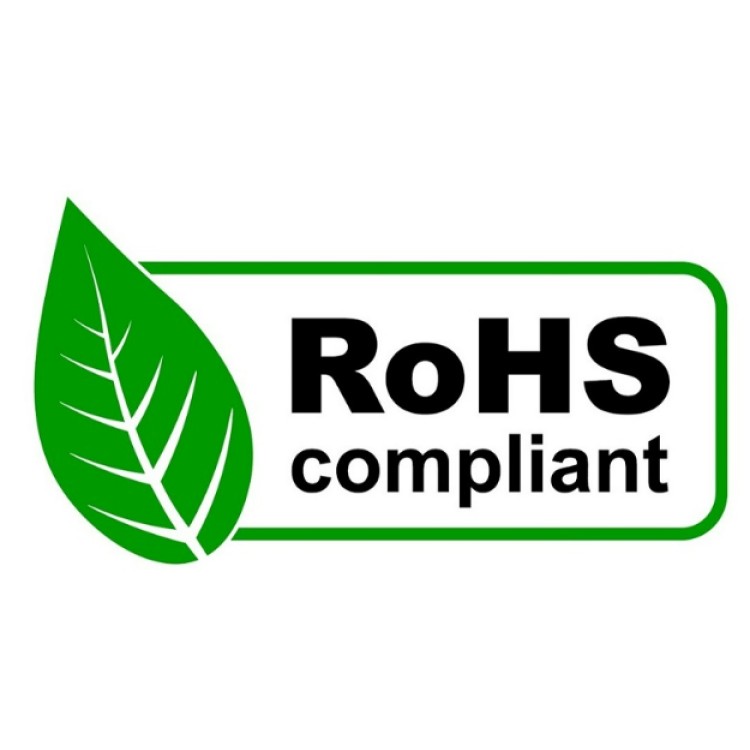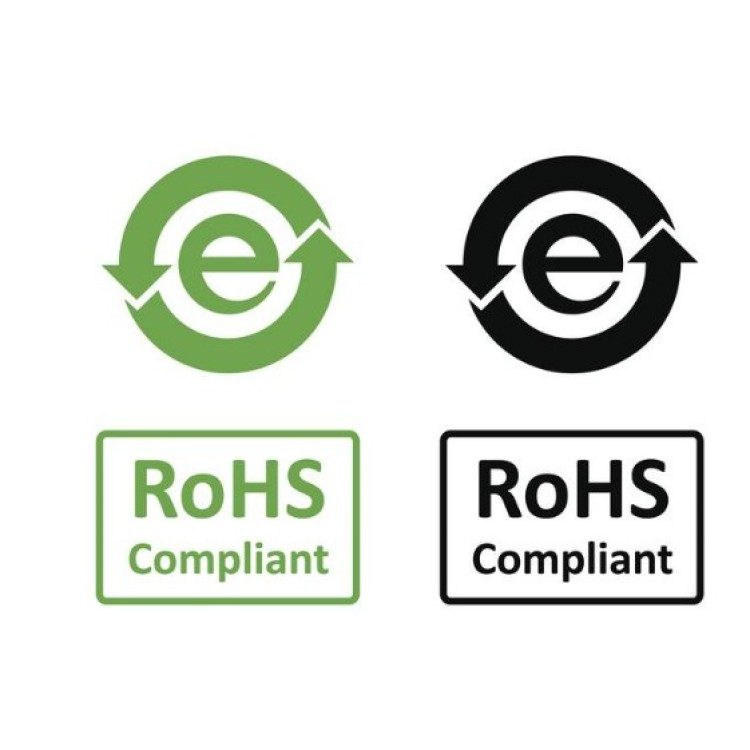美眼仪欧洲ROHS认证标准
-
¥500.00
六类有害物质
RoHS针对所有生产过程中以及原材料中可能含有上述六种有害物质的电气电子产品,主要包括: 白家电,如电冰箱,洗衣机,微波炉,空调,吸尘器,热水器等, 黑家电,如音频、视频产品,DVD,CD,电视接收机,IT产品,数码产品,通信产品等; 电动工具,电动电子玩具 ,医疗电气设备。
1. 铅(Pb) 使用该物质的例子:焊料、玻璃、PVC稳定剂
2. 汞(Hg)(水银)使用该物质的例子:温控器、传感器、开关和继电器、灯泡
3. 镉(Cd ) 使用该物质的例子:开关、弹簧、连接器、外壳和PCB、触头、电池
4. 六价铬(Cr 6+ ) 使用该物质的例子:金属防腐蚀涂层
5. 多溴联苯(PBBS) 使用该物质的例子:阻燃剂,PCB、连接器、塑料外壳
6. 多溴二苯醚(PBDE) 使用该物质的例子:阻燃剂,PCB、连接器、塑料外壳
根据中国电器工业协会的新数据,2004年一季度,我国机电产品出口在我国出口中所占比重达55%。而欧盟已经成为中国机电产品出口的主要市场。由于中国厂商环保理念和工艺水平的落后,RoHS指令使得将近270亿美元的中国机电产品面临欧盟的环保壁垒。 [2]
中国一直在给以密切关注和研究对策,责成信息产业部负责针对欧盟环保指令的研究和应对工作。信息产业部根据《清洁生产促进法》和《固体废物污染环境防治法》等有关法规制定的《电子信息产品污染防治管理办法》已经完成,并于2005年1月1日起施行。
《电子信息产品污染防治管理办法》规定,自2006年7月1日起,列入电子信息产品污染防治目录中的电子信息产品中不得含有铅、汞、镉、六价铬、聚合溴化联苯乙醚和聚合溴化联苯及其他有毒有害物质。对于2006年7月1日以前的一段时间,中国要求电子信息产品制造商们实行有毒有害物质的减量化生产措施,并积极寻找可替代品。
同时,一个名为“电子信息产品污染防治标准工作组”的机构也已经开始筹备成立,该机构的主要任务是研究和建立符合中国国情的电子信息产品污染防治标准,开展与电子信息产品污染防治有关的标准研究和制定工作,特别是加快制定急需的材料、工艺、测试方法和实验方法的基础标准。
法源依据
人民共和国信息产业部,人民共和国国家发展和改革,人民共和国商务部,人民共和国海关总署,人民共和国国家工商行政管理总局,人民共和国国家质量监督检验检疫总局,人民共和国国家环境保护总局联合会签的《电子信息产品污染控制管理方法》(第39号)
(Management Methods for Controlling Pollution by Electronic Information Products / Ministry of Information Industry Order #39)
豁免项
播报
编辑
简述
由于技术问题,部分材料或者产品的制造技术还做不到ROHS指令要求,在经过向欧盟的特殊申请后,以下项目可以获得豁免(部分豁免是有期限的):
RoHS ExemptionsEU RoHS
Items Exemption Clauses
原有
1 Mercury in compact fluorescent lamps not exceeding 5 mg per lamp
2 Mercury in straight fluorescent lamps for general purposes not exceeding:
- halophosphate 10 mg
- triphosphate with normal lifetime 5 mg
- triphosphate with long lifetime 8 mg.
3 Mercury in straight fluorescent lamps for special purposes.
4 Mercury in other lamps not specifically mentioned in this Annex.
5 Lead in glass of cathode ray tubes, electronic components and fluorescent tubes.
6 Lead as an alloying element in steel containing up to 0.35% lead by weight, aluminium containing up to 0.4% lead by weight and as a copper alloy containing up to 4% lead by weight.
7 - lead in high melting temperature type solders (i.e. lead-based alloys containing 85 % by weight or more lead)
- lead in solders for servers, storage and storage array systems, network infrastructure equipment for switching, signalling, transmission as well as network management for telecommunications
- lead in electronic ceramic parts (e.g. piezoelectronic devices).
8 Cadmium and its compounds in electrical contacts and cadmium plating except for applications banned under Directive 91/338/EEC (1) amending Directive 76/769/EEC (2) relating to restrictions on the marketing and use of certain dangerous substances and preparations
9 Hexavalent chromium as an anti-corrosion of the carbon steel cooling system in absorption refrigerators.
10 Lead used in compliant pin connector systems
11 Lead as a coating material for the thermal conduction module c-ring
12 Lead and cadmium in optical and filter glass
13 Lead in solders consisting of more than two elements for the connection between the pins and the package of microprocessors with a lead content of more than 80% and less than 85% by weight
14 Lead in solders to complete a viable electrical connection between semiconductor die and carrier within integrated circuit Flip Chip packages
15 DecaBDE in polymeric applications
16 Lead in lead-bronze bearing shells and bulbs
17 Lead in linear incandescent lamps with silicate coated tubes
18 Lead halide as radiant agent in High Intensity Discharge (HID) lamps used for professional reprography applications
19 Lead as activator in the fluorescent powder (1% lead by weight or less) of discharge lamps when used as sun tanning lamps containing phosphors such as BSP (BaSi2O5:Pb) as well as when used as specially lamps for diazo-printing reprography, lithography, insect traps, photochemical and curing processes containing phosphors such as SMS (Sr,Ba)2MgSi2O7:(Pb)
20 Lead with PbBiSn-Hg and PbInSn-Hg in specific compositions as main amalgam and with PbSn-Hg as auxiliary amalgam in very compact Energy Saving Lamps (ESL)
21 Lead oxide in glass used for bonding front and rear substrates of flat fluorescent lamps used for Liquid Crystal Displays (LCD)
22 Lead and cadmium in printing inks for the application of enamels on borosilicate glass.
23 Lead as impurity in RIG (rare earth iron gamet) Faraday rotators used for fibre optic communication systems.
24 Lead in finishes of fine pitch components other than connectors with a pitch of 0.65mm or less with NiFe lead frames and lead in finishes of fine pitch components other than connectors with a pitch of 0.65mm or less with coppler lead frames.
25 Lead in solders for the soldering to machined through hole discoidal and planar array ceramic multilayer capacitors.
26 Lead oxide in plasma display panels (PDP) and surface conduction electron emitter displays (SED) used in structural elements, notably in the front and rare glass dielectric layer, the bus electrode, the black stripe, the address electrode, the barrier ribs, the seal frit and frit ring as well as in print pastes.
27 Lead oxide in the glass envelope of Black Light Blue (BLB) lamps.
28 Lead alloys as solder for transducers used in high-powered (designated to operate for several hours at acoustic power levels of 125 dB SPL and above) loudspeakers.
29 Hexavalent chromium in corrosion preventive coatings of unpainted metal sheetings and fasterners used for corrosion protection and Electromagnetic Interference Shielding in equipment falling under category three of Directive 2002/96/EC (IT and telecommunications equipment). Exemption granted until 1 July 2007.
30Lead bound in crystal glass as defined in Annex I (Category 1,2,3 and 4) of Council Directive 69/493/EEC
检测方法
播报
编辑
1.阴离子:英蓝技术离子色谱法
采用氧弹燃烧、英蓝技术前处理之后,直接进入离子色谱进行分析
2.阳离子及其价态:
采用英蓝阳离子色谱法、离子选择电极法、原子吸收法均可检测
确定阳离子元素价态可采用伏安极谱法进行分析
Rohs的读音。
/rous/
检测方法可以参考IEC62321:2008电子电气产品中六种限用物质浓度的测定程序
A.用XRF进行无损筛选,快速,非破坏性,成本低。但干扰因素多,误差较大。
B.微波消解、酸消解后利用AAS或ICP-AES测定Pb, Cd, Hg浓度。
C. 索氏提取后用GC-MS测定多溴联苯、多溴联苯醚等的浓度。
D. 利用点测试法或沸水萃取法测定无色表层Cr6+的浓度,或是用紫外可见光分光光度计按EPA3060A测试.。
一,ROHS是什么:
ROHS,全称“限制使用某些有害物质指令”(Restriction of Hazardous Substances Directive),是由欧洲联盟制定的一项重要环保法规。新ROHS认证指令2015/863/EU指令,也被称为RoHS3.0指令。该指令旨在限制在电子电气设备中使用特定有害物质,以减少这些物质对环境和人类健康的不良影响。
1.1 ROHS认证目的:
ROHS的主要目的是促使企业采用更环保的材料和生产工艺,降低电子产品对环境和人体的潜在危害。通过限制特定有害物质的使用,该指令在电子电气设备制造领域推动了可持续发展和环保意识的提升。
以下是ROHS主要概述:
1.2 有害物质限制: ROHS指令限制电子电气设备中特定有害物质的使用,包括但不限于铅、汞、镉、六价铬、多溴联苯(PBB)、多溴联苯醚(PBDE)以及某些邻苯二甲酸酯。
1.3 环保保护: ROHS认证旨在降低电子电气设备的有害物质排放,减少这些设备在使用和处理过程中对环境的负面影响。通过限制有害物质的使用,ROHS有助于减少土壤、水源和大气中的污染。
1.4 人体健康: 通过减少电子电气设备中的有害物质,ROHS认证旨在降低人们使用这些设备时接触到有害物质的风险。这有助于保护生产、使用和处理这些设备的工人、消费者以及废弃设备的处理人员。
1.5 资源循环利用: 有害物质的减少有助于提高电子电气设备的可回收性,促进资源的循环利用。这符合可持续发展的原则,有助于减少对新原材料的需求,降低废弃设备对环境的负担。
1.6 符合欧盟法规: 根据ROHS指令,欧盟成员国有义务在国内法中实施这一指令,并对其境内销售的电子电气设备执行ROHS认证要求。因此,对于希望在欧洲市场销售的电子电气产品来说,办理ROHS认证是符合欧盟法规。
为什么这些物质受到限制?
这些物质受到限制主要出于环保和人体健康的考虑。以下是限制每种物质的主要原因:
3.1 铅(Pb):铅对人体健康有害,尤其对儿童和婴儿。它可以影响神经系统、大脑发育,甚至在高浓度下引起中毒。此外,铅在环境中的累积也对生态系统造成危害。
3.2 汞(Hg):汞是一种有毒金属,对神经系统和肾脏有害。在环境中,汞可以转化为有机汞,进入食物链,对水生生物和食物供应链造成潜在威胁。
3.3 镉(Cd):镉对肾脏和骨骼有害,而且是一种对植物生长敏感的元素。在环境中,它可以积累在土壤和水中,对生态系统产生负面影响。
3.4 六价铬(Cr VI):六价铬是一种致癌物质,长期暴露可能导致肺癌。此外,六价铬对皮肤有刺激性,可能引发过敏反应。
3.5 多溴联苯(PBB)和多溴二苯醚(PBDE):PBB和PBDE属于溴化阻燃剂,它们在环境中难以降解,并且可能积累在生物体中。这两种物质对人体和环境都具有潜在的有害影响。
3.6 邻苯二甲酸二(2-乙基己基)酯(DEHP)、邻苯二甲酸甲苯基丁酯(BBP)、邻苯二甲酸二丁基酯(DBP)、邻苯二甲酸二异丁酯(DIBP)(简称邻苯4P):这些邻苯系列物质属于一类称为邻苯酯类的塑化剂,它们可能对生殖系统和内分泌系统产生不良影响。DEHP还被认为是一种致癌物质。